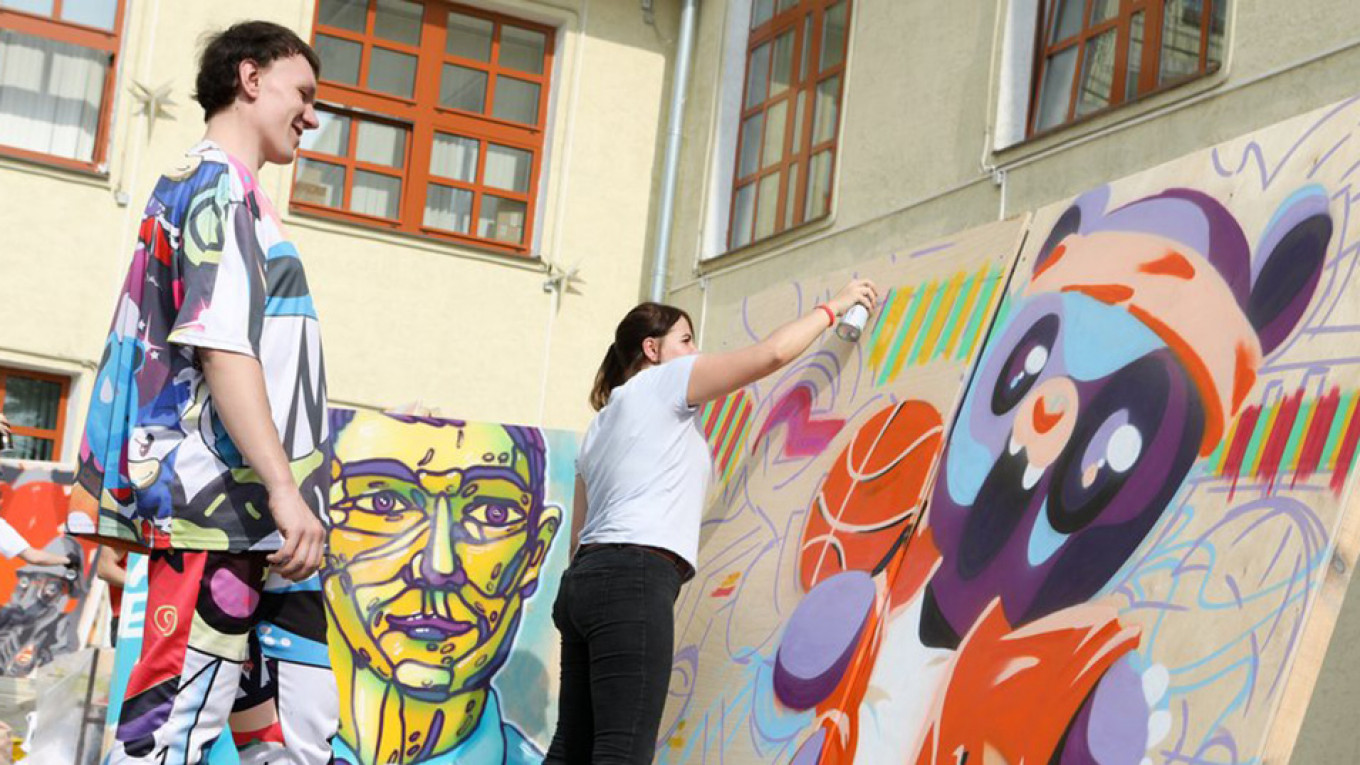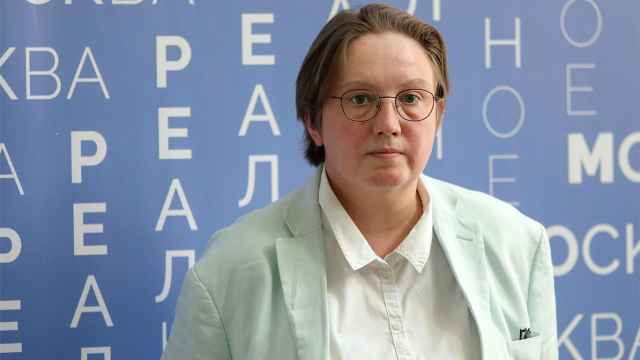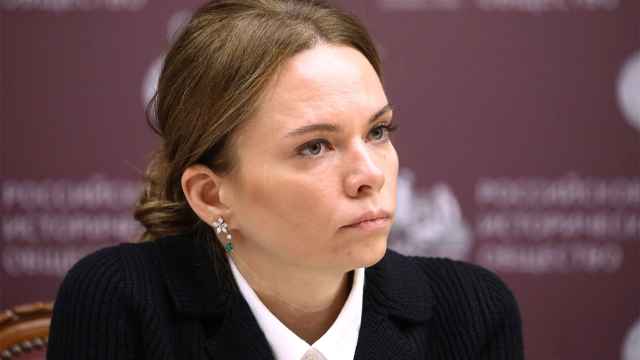Moscow has banned depictions of sex and drugs from its walls under new restrictions aimed at drawing a line between art and blight, but is drawing a mixed response from artists and stirring the debate on cities' role in regulating street art.
Perceived by some as an act of vandalism, graffiti painting has grown in prominence in recent decades, with works by leading artists like Britain's elusive Banksy courted by art galleries and top tier auction houses.
As the popularity and value of street murals has increased, cities from Melbourne to Bogota have devised rules to define where — and sometimes what — artists can legally paint.
But the process has proved tricky, raising questions about how to reconcile conflicting interests over city walls between property owners, local administrations and artists who belong to a traditionally rebellious movement, art and legal experts said.
"There is no one right system," said Lee Bofkin — co-founder of Global Street Art, a British based organization that supports street artists.
Moscow rules
Moscow became the latest world city to attempt to regulate street art when it set down new rules in July which stated that all murals require prior approval from authorities as well as property owners.
Approval now is restricted to portraits of outstanding personalities and works dealing with history, science, sport and art itself.
On the flip side, works depicting violence, pornography, profanity, tobacco, explosives and drugs are strictly forbidden — as is painting during winter.
Applications will be examined by Moscow's housing authority in concert with six other departments, including the prefecture and the architectural committee.
Graffiti artists already faced hefty fines and possible jail terms for vandalism and now house owners flouting the rules will have to pay for whitewashing.
A spokesman for the Moscow administration said the rules aimed to rein in "widespread and uncontrolled" graffiti, and especially advertising murals that have popped up across the city in recent years.
"A balance should be struck between private and public interest," the spokesman told the Thomson Reuters Foundation.
"We hope that instead of advertising, as well as pseudo-creativity ... interesting and creative works of artists will appear on the houses that will decorate the city."
Unsurprisingly, the new regulations have raised eyebrows with some local artists.
Moscow-based painter Konstantin "Zmogk" Danilov welcomed efforts to stop the "avalanche of advertising frescoes" passed off as "art," but said restrictions on art content and the overly bureaucratic approval process threatened creativity.
"The final approval depends on too many people who are not related to art," added fellow painter Olga Chikina, or INEY.
Artists, she said, need freedom of expression. Both painters agreed that many would continue to work without regard to the new restrictions.
Protect or prohibit?
Other cities have adopted approaches that contrast sharply with Moscow's.
Colombia's capital Bogota decriminalized graffiti in 2011 after a teenage painter was killed by police, and the city has since become a go-to destination for street art tourists.
Many European capitals have designated areas where artists can work freely, creating open-air museums while cracking down on graffiti in historic districts, said Luca Ciancabilla an arts professor at Italy's University of Bologna.
In an unusual move, Prague this week moved to install security cameras to protect graffiti on its John Lennon Wall from tourists who would routinely come to add their own mark to it, the wall owner and the city's administration said.
In Italy, cities including Mantua and Bologna have actively commissioned murals to embellish sometimes poorly designed suburban council blocks, said Ciancabilla.
A 2016 study by researchers at the University of Warwick in Britain found that the presence of art works in a district was linked to increasing property values.
Shades of grey
From a legal standpoint, cities have the right to regulate what can be painted, but grey areas remain, said Enrico Bonadio, an intellectual property lecturer at City, University of London.
Homeowners, however, have a general right to do as they please with their walls, he noted.
In July, a U.S. judge struck down a New Orleans requirement that property owners submit murals to the city for a preliminary content review, saying it violated freedom of speech.
And legal or not, works of art are protected internationally by copyright, which grants artists control over their economic exploitation, such as the sale of graffiti emblazoned T-shirts, Bonadio said.
Additionally, artists retain moral rights over their work, allowing them a certain degree of control over how murals are used by the owners of the wall they are painted on — being that a city or a private, he added.
In 2018, a New York judge awarded $6.7 million in damages to 21 graffiti artists whose works on an abandoned factory in the borough of Queens were whitewashed without warning by the building owner, who planned to redevelop the site.
Although the ruling was unique to the United States and based on local legislation to protect art works, judges in other countries could follow that lead, Bonadio said.
But finding common agreement around what is art deserving protection and what is not remains problematic, said Ciancabilla.
"Many still see graffiti as trash and dregs," he said, "while 99% of taggers think of themselves as potential artists."
A Message from The Moscow Times:
Dear readers,
We are facing unprecedented challenges. Russia's Prosecutor General's Office has designated The Moscow Times as an "undesirable" organization, criminalizing our work and putting our staff at risk of prosecution. This follows our earlier unjust labeling as a "foreign agent."
These actions are direct attempts to silence independent journalism in Russia. The authorities claim our work "discredits the decisions of the Russian leadership." We see things differently: we strive to provide accurate, unbiased reporting on Russia.
We, the journalists of The Moscow Times, refuse to be silenced. But to continue our work, we need your help.
Your support, no matter how small, makes a world of difference. If you can, please support us monthly starting from just $2. It's quick to set up, and every contribution makes a significant impact.
By supporting The Moscow Times, you're defending open, independent journalism in the face of repression. Thank you for standing with us.
Remind me later.






